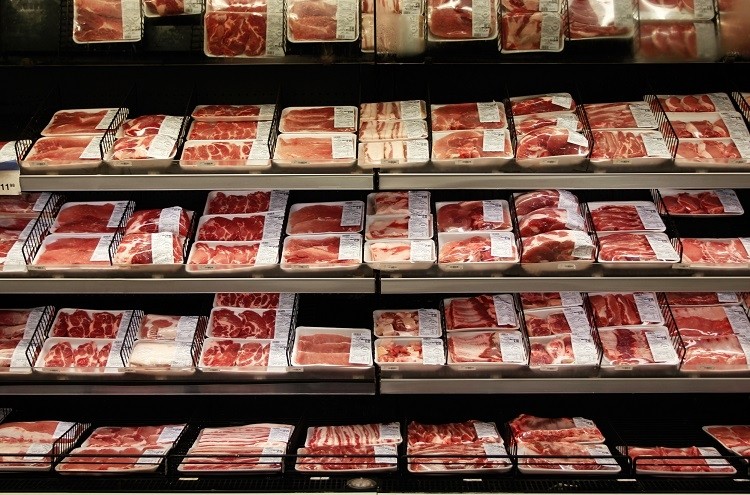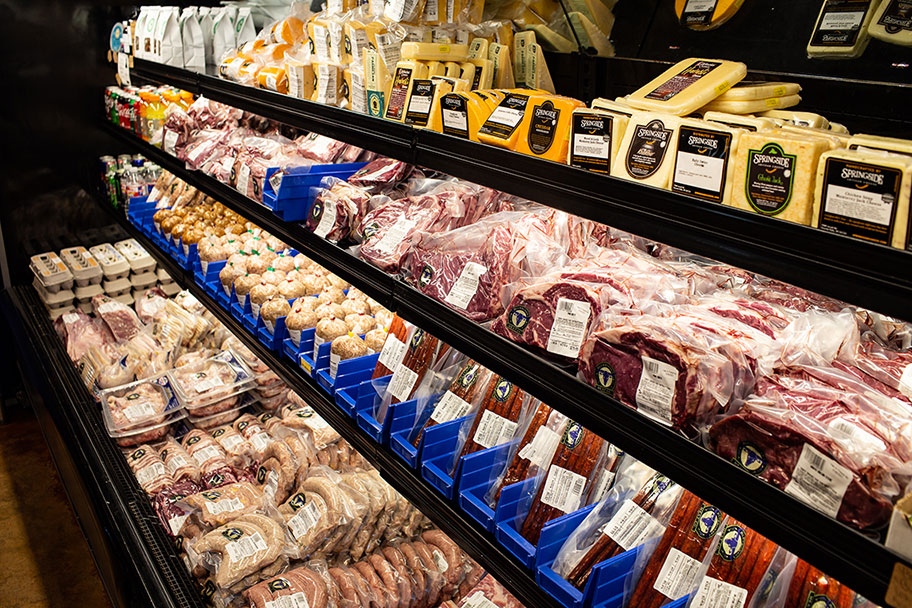Visit Bagley Farms Meat Market Edwardsville IL for Farm-Fresh Meat and Specialized Cuts
Visit Bagley Farms Meat Market Edwardsville IL for Farm-Fresh Meat and Specialized Cuts
Blog Article
Reveal the Art of the Butcher's Cut in a Modern Meat Market
In the ever-evolving landscape of modern meat markets, the butcher's cut has actually transcended its standard roots, combining olden workmanship with modern practices. What truly establishes the modern butcher apart is their capacity to forge a much deeper connection in between customers and the origins of their meat.
Advancement of Butchery Techniques

The mid-20th century saw butchery methods additionally fine-tuned by scientific understandings right into muscular tissue biology and meat aging, improving both tenderness and taste. Innovations like vacuum cleaner product packaging and refrigeration prolonged product shelf-life, permitting butchers to branch out offerings and enhance quality control. This duration additionally marked the rise of customized tools, such as band saws and meat slicers, which boosted precision and efficiency in meat handling.
Digital systems currently help in tracking pet provenance and enhancing cuts to fulfill specific client preferences. Furthermore, a renewal in artisanal butchery has actually arised, mixing conventional abilities with contemporary understanding to provide to consumers looking for ethical and sustainable meat options.

Understanding Meat Cuts

Recognizing the ins and outs of meat cuts is important for both butchers and customers looking for quality and worth. For butchers, accurate cuts reflect ability and respect for the craft, making certain very little waste and optimal return.
The main categories of meat cuts consist of primal, sub-primal, and retail cuts. Butchers then damage these down additionally into sub-primal cuts, before finally creating retail cuts readily available to consumers, like ribeye or tenderloin.
Recognizing muscle make-up is essential; muscular tissues used extra frequently by the pet tend to be harder and are best matched for sluggish food preparation methods, while less-used muscles, like those discovered in the loin, are more tender and ideal for cooking or roasting. Familiarity with these differences encourages consumers to make educated selections, enhancing their culinary ventures.
Picking Quality Meat
Choosing the best meat includes more than just picking a visually attractive piece from the screen. The art of choosing high quality meat needs a discerning eye and expertise of specific characteristics that symbolize quality and quality. To Full Article start with, focus on the color; beef ought to have a brilliant, cherry-red color, while lamb must display a soft pink tone, and pork a pale pink. This suggests the meat is fresh and hasn't been exposed to oxygen for too lengthy.
Secondly, take into consideration the marbling, which describes the white flecks of fat within the muscular tissue. Correct marbling is a crucial indicator of inflammation and flavor, as it thaws during food preparation, improving the meat's juiciness. Remember, greater marbling typically correlates with superior quality cuts, such as USDA Prime.
Structure is another essential element; meat needs to feel strong to the touch, not slimy or excessively soft. Additionally, bear in mind the scent. Fresh meat must have a tidy, neutral smell, devoid of any type of sour or repulsive odors.
Combining Cuts With Cooking Techniques
Efficiently matching cuts of meat with the ideal cooking techniques is essential for accomplishing optimum flavor and structure. Various cuts differ in tenderness, marbling, and connective cells web content, each requiring certain techniques to unlock their capacity. As an example, tender cuts like filet mignon and ribeye, with their fundamental marbling, gain from high-heat, quick-cooking methods such as grilling or pan-searing. These techniques boost the meat's all-natural tastes and guarantee a juicy surface.
Alternatively, tougher cuts like brisket and chuck roast are rich in collagen, which breaks down into jelly when prepared gradually. These cuts are excellent for braising or slow roasting, allowing the meat to tenderize gradually and establish deep, complicated tastes. Cuts such as short ribs and pork shoulder fare well with slow-cooking methods, where extended cooking times transform their robust textures right into delicious recipes.
Lamb shanks and oxtail, which require prolonged cooking to tenderize, are best candidates for stewing or slow simmering. These methods coax out rich, passionate tastes while keeping dampness. By recognizing the one-of-a-kind features of each cut, cooks and home chefs alike can raise their cooking developments, making certain each recipe is both pleasing and memorable.
The Butcher's Function Today
Navigating the evolving landscape of the contemporary meat market, the butcher's function today extends past simple preparation of cuts. Contemporary butchers are cooking artisans, instructors, and advocates for lasting techniques.
In addition to crafting exact cuts, butchers currently involve straight with consumers, offering cooking recommendations and customizing choices to suit private needs and choices. Their proficiency in meat aging, marbling, and flavor profiles equips customers to more make informed choices, enhancing their cooking experiences. This tailored service exhibits the butcher's progressing function as a relied on expert in the cooking area.
In addition, butchers are pivotal in minimizing waste, utilizing entire pets to produce diverse products such as sausages and supplies - bagley farms meat market edwardsville il. This extensive approach not just respects the animal however additionally aligns with contemporary sustainability goals. In this method, Get More Information the modern-day butcher embodies both tradition and innovation, adjusting to an ever-changing market while protecting the artistry and stability of their craft

Conclusion
The contemporary butcher's craft delicately weaves standard techniques with modern-day innovations, emphasizing sustainable techniques and moral sourcing. Mastery in comprehending diverse meat cuts and quality indicators equips butchers to supply educated referrals, straightening details cuts with optimum cooking methods. This know-how not just boosts culinary experiences yet also enhances the link between consumers and the beginnings of their food. By recognizing historic methods while accepting modern needs, the butcher's function remains vital in today's innovative meat market.
Report this page